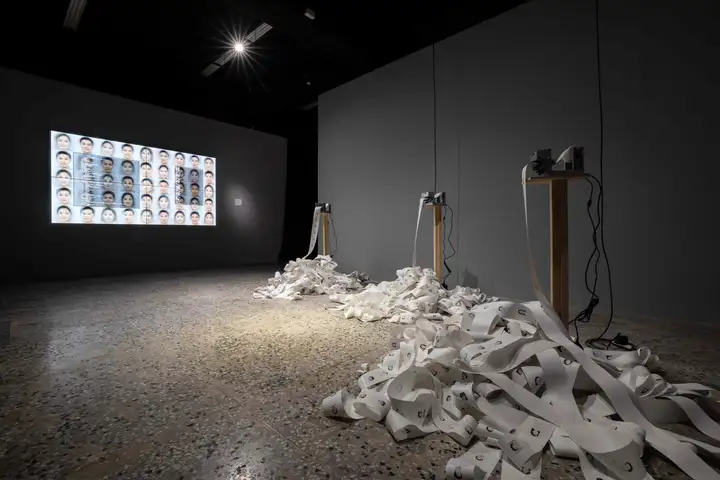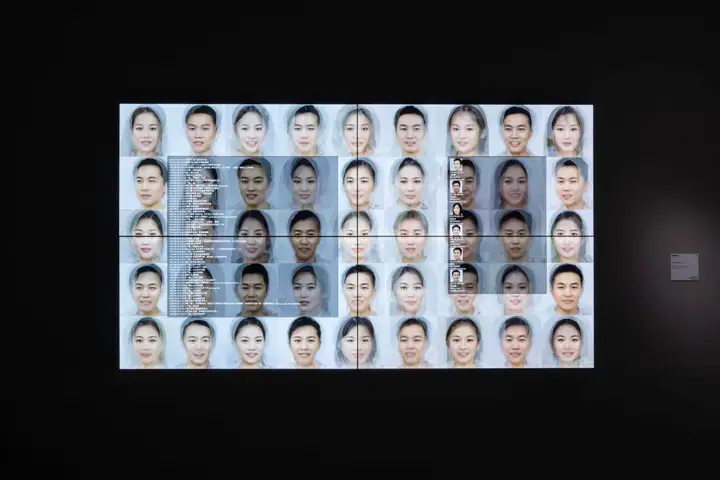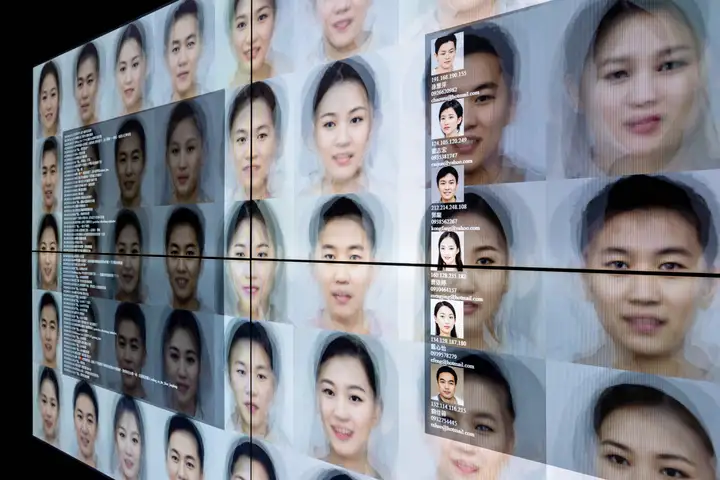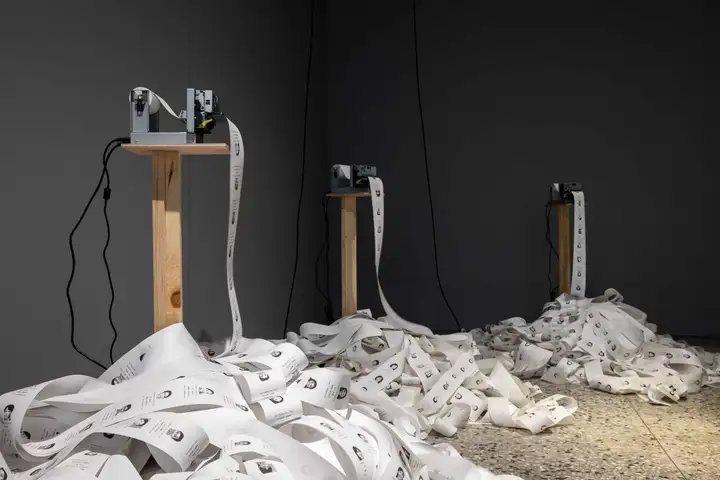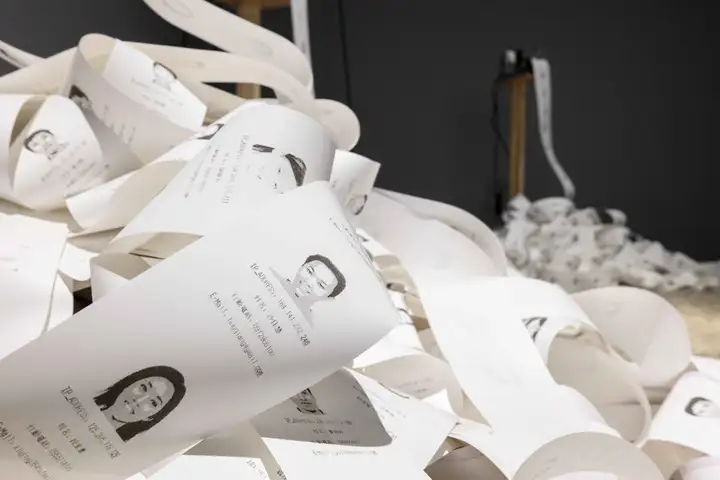It Could Be You
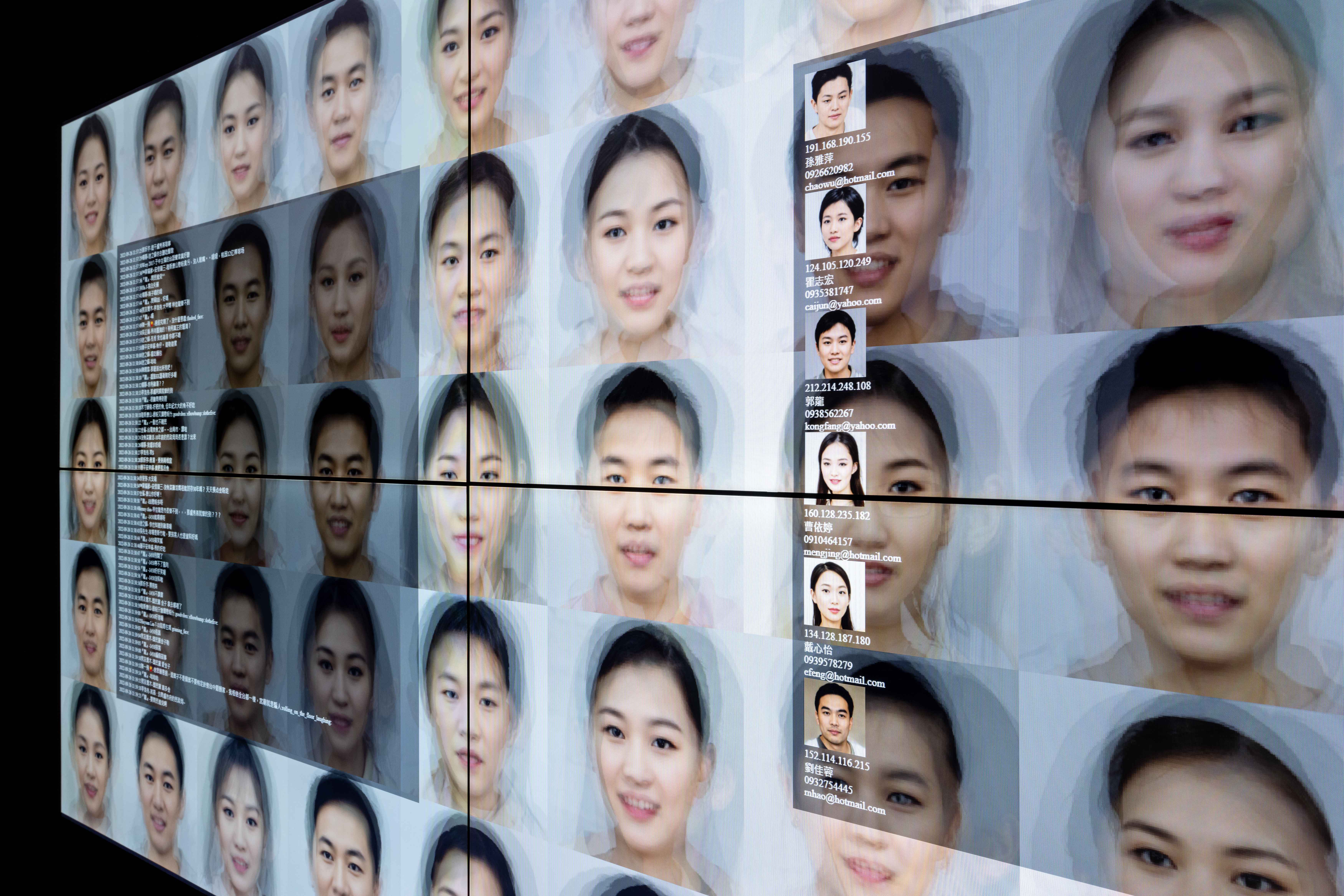
It Could Be You
Year:2022
Material:Software, printer, thermal paper, real-time generative video, installations variable
“It Could Be You,” a provocative digital art installation by CHENG Hsien-Yu, delves into the intricate realm of digital identity and personal privacy. The artwork presents a critical examination of how personal data has become increasingly vulnerable in the digital era, prompting viewers to confront the subtle mechanisms of online surveillance and identity construction.
The project illuminates the gradual erosion of personal privacy, exposing how individuals have inadvertently shared their most private information through social media platforms and digital interactions. Through the utilization of advanced machinelearning and ethical hacking methodologies, the artwork transforms online forum messages and chat room interactions into a haunting portrayal of synthetic identity.
Through a meticulous data collection and algorithmic manipulation process, the installation fabricates personal identities that blur the boundaries between reality and digital fiction. The artwork collects messages from various online platforms and employs advanced algorithms to construct synthetic portraits and personal details that are remarkably plausible. This approach transcends mere technical demonstration, serving as a profound commentary on the commodification of personal information.
The physical manifestation of the project is both visually striking and conceptually rich. A dynamic matrix of animated facial images continuously morphs on screen, accompanied by three monochrome thermal printers that systematically produce fabricated identities. As synthetic portraits and personal details accumulate on the floor, the installation presents a tangible representation of how digital systems simplify human complexity into calculable patterns.
“It Could Be You” confronts audiences with the unsettling reality of contemporary digital surveillance. The artwork exposes how machines process personal information with increasing sophistication and diminishing concern for authenticity. It unveils the algorithmic potential to create identities that are both fictional and unsettlingly convincing, prompting viewers to reevaluate their digital footprints.
The installation offers an immersive journey into the mechanics of digital identity construction. Viewers witness a real-time demonstration of how personal data can be collected, manipulated, and synthesized, transforming abstract concepts of privacy invasion into a visceral, visual experience. The continuous generation of synthetic identities serves as a mirror reflecting the invisible processes that shape our digital existence.
“It Could Be You” functions as a critical intervention in the discourse of digital privacy. It exposes the fragility of personal information in an era of ubiquitous data collection, raising fundamental questions about consent, identity, and the increasingly algorithmic nature of human representation. The work challenges viewers to recognize how readily we surrender our personal narratives to digital systems.
This work serves as an artistic statement, transforming intricate technological processes into a captivating visual narrative. By making the invisible mechanisms of data mining visible, the artwork invites critical contemplation on the essence of identity in our increasingly digital world.
作品《這可能是你》以網路即時留言者暱稱作為搜尋臉部圖像的關鍵,藉由合成資料與機器學習,產出許多不同的臉孔以及假個資,創造出「這有可能是你」的情境假象,用以質問與顯現個人的數位足跡與龐大網路資料能夠作為軟體系統對於人類的想像。這種方式並非像透過光的折射,再藉由大腦的化學生理變化去理解畫面,而是藉由每一個Pixel dot(像素點),再經過演算方式的一連串處理,當電腦軟體將人形辨識為物件時,知道依據型態去定義人,再加上物件是否移動的邏輯,它能更確認這是個會動的人,而不是一個靜態的人型看板。軟體藉由參考行為與環境的參數及變化,增強對於物件或事件的定義。
作品探討當代社會中個人隱私的流失。該作品審視了我們如何在不知不覺中,透過社群媒體的使用及智慧裝置的普及,放棄了資訊與空間上的隱私。
透過機器學習與倫理駭客技術,這件裝置從線上論壇與聊天室中蒐集訊息,進而生成合成但令人不安地真實的身份。此創作方式結合了生成式人工智慧與合成資料生成,展示了算法如何製造出具備肖像、姓名、聯絡資訊與IP位址的逼真人物,模糊了數位虛構與現實之間的界線。
實體裝置呈現出一個不斷變化臉部影像的動態矩陣,並搭配三台持續列印這些合成身份的單色熱感應印表機。隨著虛構身份紙張堆積在地上,形成了一種具象的視覺效果,象徵數位系統如何將人類的複雜性簡化為可計算的模式。
《It Could Be You》透過將抽象的隱私議題轉化為直觀的視覺經驗,揭露了資料挖掘與算法身份建構背後看不見的機制。此作品挑戰觀者重新思考自己的數位足跡,並突顯一個令人不安的事實:處理我們數據的系統越來越無法——或許是不在意去——區分真實與合成身份。這項批判性的藝術干預,邀請人們反思同意、隱私以及生成式科技在重塑我們身份認知方面所扮演的角色,並思考在日益演算法化的世界中,個人身份的意義。
作品源自2019年鄭先喻的個展{同化者}中無題作品之延伸,藉由網路伺服器端應用,搜尋並搜集地區性線上論壇與即時聊天室資訊,建立資料庫模型以及視覺產出。當網路鄉民一留言,系統運用發文或留言者的帳號去搜尋可能的個人資料與肖像照片,再藉由合成資料技術結合機器學習成像,產出一系列的假想個資。
觀眾將於現場觀看網路鄉民即時訊息,現場列印機裝置則定時將合成的個人資料列印產出。
The work "It Could Be You" uses the nicknames of online real-time commenters as key elements for searching facial images. Through synthetic data and machine learning, it generates various faces and fabricated personal information, creating a scenario of "It could be you." This is used to question and reveal individuals' digital footprints and how extensive online data can be utilized by software systems to imagine human characteristics. Unlike the way we understand images through the refraction of light and the subsequent chemical and physiological changes in the brain, this method involves processing each individual pixel dot through a series of algorithms. When the computer software recognizes a human form as an object and defines it based on patterns, along with logic to determine object movement, it can confidently identify it as a moving person rather than a static human-shaped signboard. By referencing parameters and variations in behavior and the environment, the software enhances its definition of objects or events.
As a continuation of the untitled works featured in CHENG Hsien-Yu‘s solo exhibition{Assimilator} in 2019, It Could Be You employs internet servers to collect messages from regional online forums and chatrooms to create a database model and to generate visual images. When netizens post a message, the system will detect it and instantly search for any personal information and portraits available by the users’ IDs, with which it adopts and integrates the technology of synthetic data with machine learning to generate images as a series of imaginary and fictional personal data.
Apart from the real-time and on-site display of the instant messages posted by netizens around the digital world, the installation will also print out the synthetic personal data at regular intervals.
